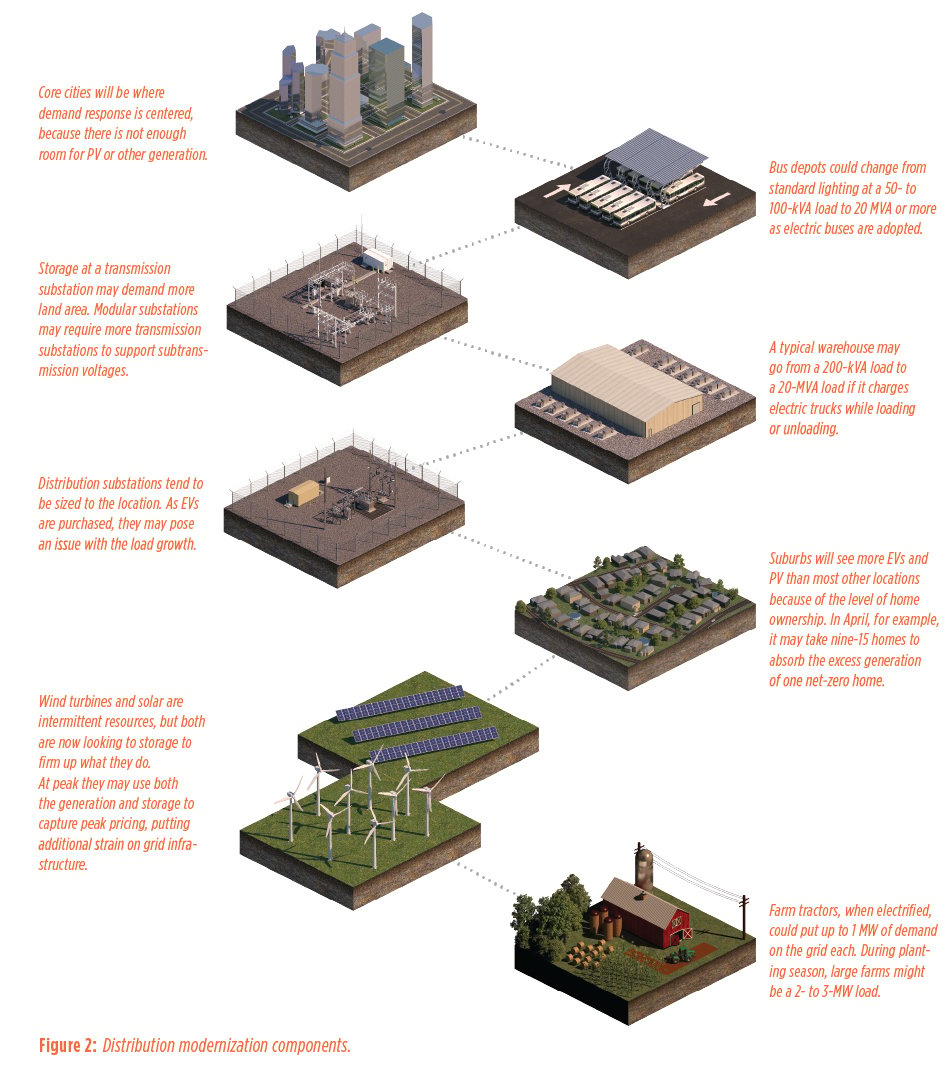Digitization, fiber optics and miniaturization have all helped to lower the cost and increase the practicality of using advanced sensor capabilities on the grid. Connected consumers rely on intelligent devices and now expect such capabilities from service providers. Modernization efforts are an excellent time to take advantage of technology advancements. Surveys show that younger customers will not typically call to report an outage, because they can’t fathom that the utility is not automatically dispatching the crews.
Grid modernization that is truly smart goes well beyond automated metering. Building a smarter grid affords utilities the opportunity to fundamentally improve operations through outage tracking, analysis, reporting and utility response planning.
Effective grid planning, however, avoids getting swept up in the almost infinite data capabilities and instead zeroes in on the simplest and easiest applications that quickly add value and increase grid efficiency. Programs and elements should work together and build on each other to help transform the operation, interaction and management of grid assets.
Operational metering and sensing
Advanced metering infrastructure (AMI) serves as a backbone for the grid. AMI is the energy measurement and collection system, including on-site customer meters, designed to take full advantage of the complete smart communications system, not just billing tasks.
This two-way communication capability allows for remote measurement of electricity use; service connection and disconnection; tampering detection; outage location, cause and isolation; voltage monitoring; and more. Utility time-based rate programs, peak demand incentives and energy consumption monitoring also are enabled. Using real operational metering means dynamic tap changes can be made to accommodate more generation or prevent low voltage. It also means that capacitor banks can be remotely turned on and off, or that the inverters on solar arrays can be tuned to provide the right amount of reactive power. All of this reduces line losses and provides higher-quality power.
For maximum advantage and optimal capabilities, backhaul communications and allowed latency are designed to support operational goals, not just daily billing needs. Likewise, these smarter sensing capabilities help consumers measure, monitor and take control of their power usage. For the growing number of homes with smart sensors, devices and EVs, AMI is key to helping manage electricity usage and discharge. Eventually, communications need to flow into the premises to support customer decisions.
Distribution automation and substation automation
Modern grid planning must incorporate a robust, reliable and efficient architecture to handle new loads and customer- sited distributed generation (DG), such as solar. Distribution automation (DA) is a crucial component to achieve these objectives, leveraging AMI and other distribution sensors like remote fault indicators or sensors in reclosers. Intelligent planning of the location of DA assets allows them to be at the right locations without putting in too many. Careful evaluation of placement of automatic circuit reclosers (ACRs), feeder switches and loop schemes should occur for all grid upgrades.
Substation automation (SA) collects and analyzes significant amounts of component and control data to further enhance reliability and real-time response to events. By going well beyond traditional Supervisory Control and Data Acquisition (SCADA) systems, SA programs are used to deliver advanced capabilities and improve operations and maintenance. Items like single-phase dry type tap-changers driven by SA can provide dynamic voltage control on each phase, minimizing phase imbalance and maximizing the ability to collect energy from installed DG. With DG, moving transformers from phase to phase to balance the circuit is not possible, because the imbalance changes between day and night.
Smart SA planning addresses a range of considerations, including transitioning to triple singles in a phase-by-phase approach. Protecting power and increasing efficiency comes from the ability to isolate any phase problems while keeping power flowing to customers.
Advanced communication networks
Given the nation’s dependence on electricity, deploying advanced communication networks is vital to supporting a modern grid. Innovative and robust communications provide consistent capability regardless of environmental conditions. These networks also can manage and control grid scheduling, prioritizing data sent and actions needed. Advanced communication networks are used because they are both smart and strong.
For grid modernization planning, smart communications can be designed for transmission, substations, and in the distribution network to the meter and beyond the meter at buildings, homes and offices. Networks capture and transfer the data and insight needed to deliver long-term operational refinement, thereby enabling network predictability and continuous improvement for utilities and customers. Considerable analysis capability can be installed in each of these zones, so that only the critical data must be brought back to the central office; instead, schedules can be pushed to substations and buildings that then manage to those schedules and only report exceptions.
Operational technology and analytics
Although they are installed in the operations center, DA and SA are mostly useless without the systems to analyze the data and make it available to operators. Advanced Distribution Management Systems and other operational technology systems need to be planned into the grid modernization effort.






